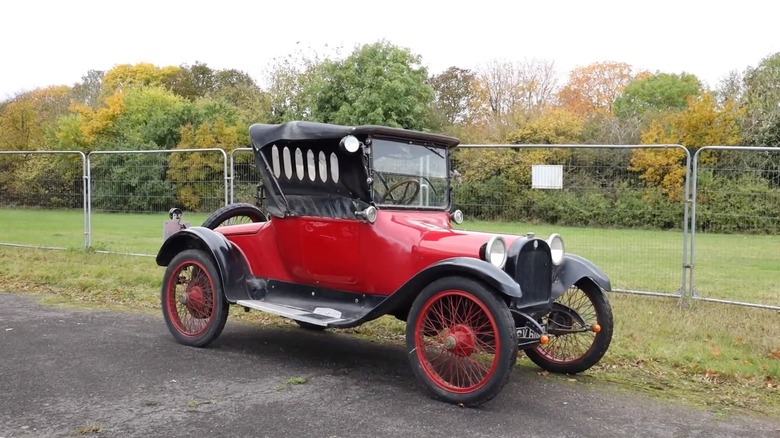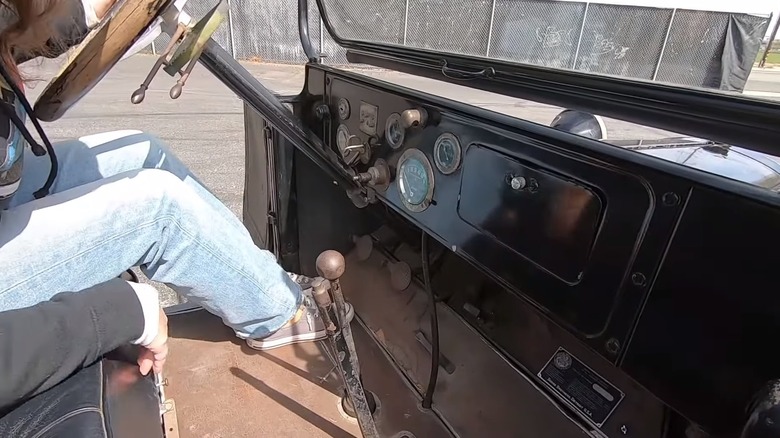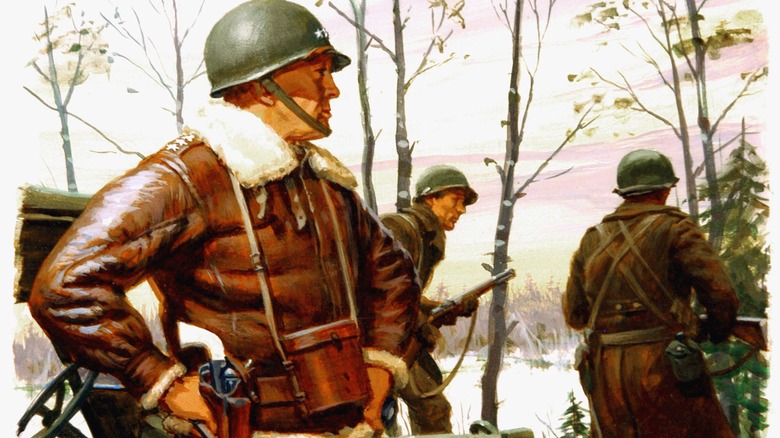All About The Classic Dodge Model 30-35
While it may be difficult to imagine, there was a time when automobiles didn't line city streets, and commutes involved horses. The first car ever invented didn't come along until the 1880s, and would remain prohibitively expensive and impractical well into the first years of the 20th century. Some of the first cars to challenge that status quo in the United States came branded with a familiar name: Dodge.
Horace and John Dodge started their company, the Dodge Brothers of Detroit in 1900, making parts for other American automotive legends like Henry Ford and Ransom Olds. After years of work, the Dodge brothers decided to create their vision of the automobile. The Dodge Model 30-35 was their initial foray into vehicle manufacturing, and judging by the brand's continued success lasting well over a hundred years, the 30-35 made an impression. While innovative manufacturing and the unique Model T engine gave Ford dominance over the early American car market, the Dodge 30-35 delivered better performance, a more robust body, and a superior transmission to the legendary T. The 30-35 performed so well that it was used in some of the U.S. military's first motorized maneuvers, all the way back in the Pancho Villa Expedition.
More drivable and more durable than the competition
While the Model T revolutionized travel for Americans, operating it was cumbersome due to its transmission. Ford's car had three pedals: one for two forward gears and neutral, one for the reverse gear, and one for the brake. This arrangement required the driver to pull off complex, simultaneous motions involving the throttle, handbrake, and multiple pedals just to get off the line. The Dodge 30-35 came with a more modern stick-driven gearbox that offered three speeds, providing a much more straightforward driving experience.
Another advantage the first Dodge had over other models of the time was a frame composed entirely of steel, a first for the American market. Other cars of the time were made of steel panels mounted on wooden frames — much less sturdy.
Regarding performance, the Dodge 30-35 came equipped with a 4-cylinder engine capable of generating 35 horsepower. While this may seem insignificant, its rival, the Model T, only offered 20 horsepower, and the Dodge 30-35 could reach a top speed of 60 mph, 15 mph faster than the Model T.
Patton used it to fight against Pancho Villa
Once word got out that the Dodge 30-35 offered superior construction at an affordable price, sales increased dramatically. Production of the 30-35 went from 370 in 1914 to a whopping 45,000 the following year. In addition to American's eagerness to get their hands on a new Dodge, the armed forces took an interest.
During the beginning months of 1916, the Mexican revolutionary Pancho Villa raided the American town of Columbus, New Mexico. In response, General John Pershing led 250 Dodge 30-35s converted to Army trucks across the Mexican border after Villa. The vehicles would change the course of military history, as the U.S. Army's ultimately fruitless hunt for Pancho Villa represented one of the first large-scale motorized assaults. The Dodges served alongside other early American icons, some motorized — Pershing's force also included early Harley and Indian motorcycles — some human. Notably, a young lieutenant named George Patton, 25 years before becoming a legend of World War II, returned from one raid on Villa's forces with the corpses of three men tied to the hoods of his Dodge trucks. While Villa escaped Pershing's expedition, he would be killed by political rivals in 1923 — behind the wheel of his own Dodge 30-35.


